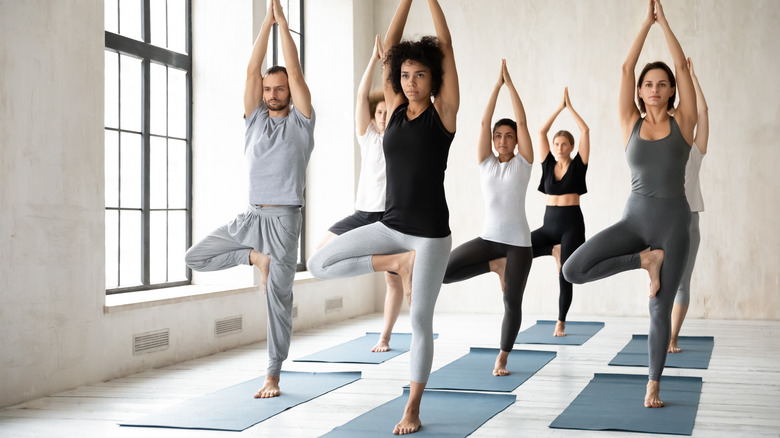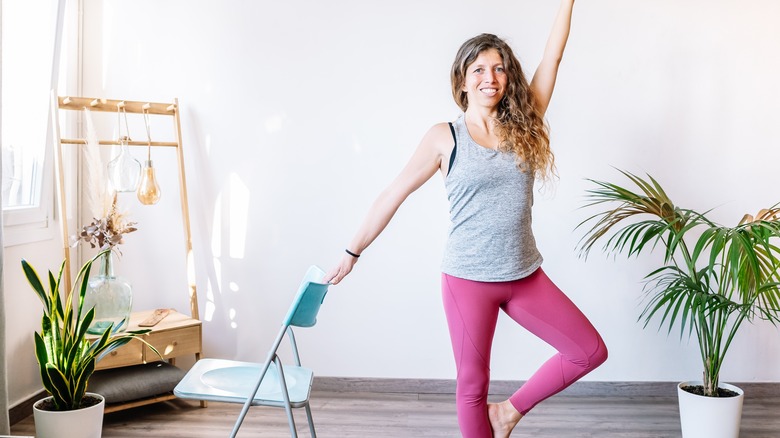Reasons You Might Want To Skip Tree Pose In Yoga
Tree pose, or "vrikshasana" in Sanskrit, is one of the standard poses you'll do in a yoga class. It requires you to balance on one leg while opening the hip of the opposite leg. Some people might start just by putting the heel on the opposite leg on the standing ankle while the toes remain grounded on the floor. Others might hike the floating foot so it rests on the inside of the standing leg.
However you practice tree pose, you're strengthening and stabilizing your hips, ankles, and calves. If you have flat feet, tree pose also helps stretch and strengthen the arches of your feet. You'll also get a nice stretch in your groin and inner thighs.
However, for some people, tree pose might not be the best. Several physical factors can contribute to difficulty maintaining balance in tree pose, such as lack of muscular strength or misalignment. According to Tummee, people who have arthritis or an injury to their hip, knee, or ankle might want to modify tree pose by using a chair or a wall to help with balance and stability. If you suffer from vertigo, balancing in tree pose might be difficult, too; so be sure to have a wall nearby. Holding tree pose for a long time might also be challenging for people who are coming back from an illness or surgery that's kept them bedridden. People with high blood pressure should either skip tree pose or avoid raising their arms over their heads (via Art Of Living).
Tree pose modifications
If your yoga instructor calls for tree pose and you're not quite sure if you're ready for it, you can modify tree pose until your strength, stability, or balance improves, according to Yoga Rove. It's always handy to have a wall or a chair nearby to help with balance; but, if that's not available to you, you can simply keep the toes of the bent leg grounded on the floor.
Yoga is about tuning into the body, so looking around the room during tree pose might make it more difficult to balance. Your instructor might call for you to find your "drishti," or a focal point. You'll want to steady your gaze on a place on your mat just below you without dropping your head. Your balance will also be better if you place your hands by your sides or on your hips rather than over your head. That will also help in keeping your torso upright.
If you have knee issues, be sure not to lock the knee of the standing leg; and be sure you're not putting too much weight on the single leg by keeping both feet on the floor. You'll also want to avoid placing the floating foot against the knee of the standing leg. The foot of the floating leg should be either above or below the knee.


